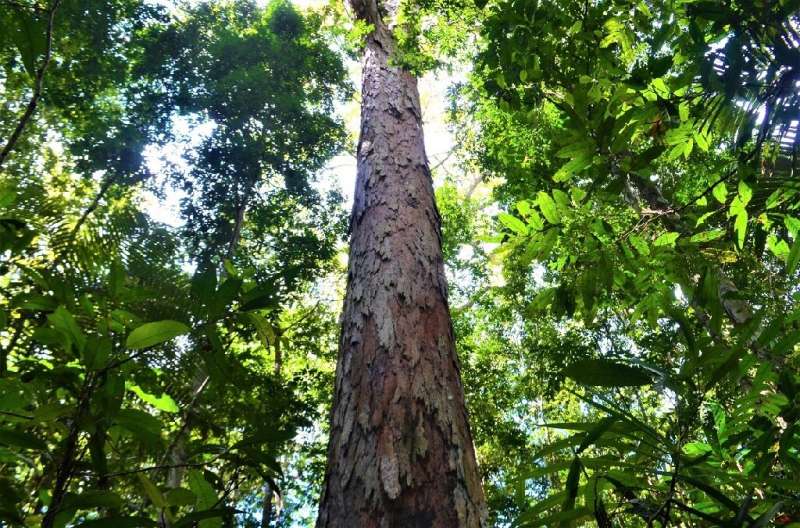Forests may flip from CO2 'sink' to 'source' by 2050

Forests and other land ecosystems today absorb 30 percent of humanity's CO2 pollution, but rapid global warming could transform these natural 'sinks' into carbon 'sources' within a few decades, opening another daunting front in the fight against climate change, alarmed researchers have said.
Climate sceptics often describe CO2 as "plant food", suggesting that increased greenhouse gas emissions will be offset by a massive upsurge in plant growth.
But the new study shows that beyond a certain temperature threshold—which varies according to region and species—the capacity of plants to absorb CO2 declines.
Under current greenhouse gas emission trends, plants across half the globe's terrestrial ecosystem could start to release carbon into the atmosphere faster than they sequester it by the end of the century, researchers reported this week in Science Advances.
Ecosystems that store the most CO2—especially tropical and boreal forests—could lose more than 45 percent of their capacity as carbon sponges by mid-century, a team led by Katharyn Duffy from Northern Arizona University found.
"Anticipated higher temperatures associated with elevated CO2 could degrade land carbon uptake," said the study, based not on modelling but data collected over a period of 25 years.
Failure to take this into account leads to a "gross overestimation" of the role Earth's vegetation might play in reducing global warming, the researchers warned.
"The temperature tipping point of the terrestrial biosphere lies not at the end of the century or beyond, but within the next 20 to 30 years."

Key to understanding how this could happen is the difference between photosynthesis and respiration, two chemical processes essential to plant life that respond differently to rising temperatures.
Drawing energy from sunlight, plants absorb carbon dioxide through their leaves and water from the soil, producing sugar to boost growth and oxygen, which is released into the air.
This is photosynthesis, which can only happen when there is daylight.
By contrast, the transfer of energy to cells through respiration—with CO2 excreted as a waste product—happens around the clock.
Tipping points
To find out if there is a temperature beyond which land-based ecosystems would start to absorb less CO2, Duffy and her team analysed records from a global observation network, called FLUXNET, spanning 1991 to 2015.
FLUXNET essentially tracks the movement of CO2 between ecosystems and the atmosphere.
They found that global photosynthesis peaks at certain temperatures, depending on the type of plant, and then declines thereafter.

Respirations rates, however, increase across all types of ecosystems without appearing to reach a maximum threshold.
"At higher temperatures, respiration rates continue to rise in contrast to sharply declining rates of photosynthesis," the study found.
If carbon pollution continue unabated, this divergence will could see the CO2 absorption drop by half as early as 2040.
"We are rapidly entering temperature regimes where biosphere productivity will precipitously decline, calling into question the future viability of the land sink," the researchers concluded.
The findings also call into question the integrity of many national commitments under the Paris Agreement—known as nationally determined contributions, or NDCs—to reduce greenhouse gases.
"These rely heavily on land uptake of carbon to meet pledges," the authors point out.
The study notes that capping global warming under two degrees Celsius above pre-industrial levels, the cornerstone target of the 2015 Paris climate treaty, "allows for near-current levels of biosphere productivity, preserving the majority of land carbon uptakes."
Earth has warmed at least 1.1C so far, and is currently on track to heat up another two to three degrees by century's end unless emissions are rapidly and drastically reduced.
In 2019, a football pitch of primary, old-growth trees was destroyed in the tropics every six seconds—about 38,000 square kilometres (14,500 square miles) in all, according to satellite data.
More information: K.A. Duffy el al., "How close are we to the temperature tipping point of the terrestrial biosphere?," Science Advances (2020). advances.sciencemag.org/lookup … .1126/sciadv.aay1052
Journal information: Science Advances
© 2021 AFP



















